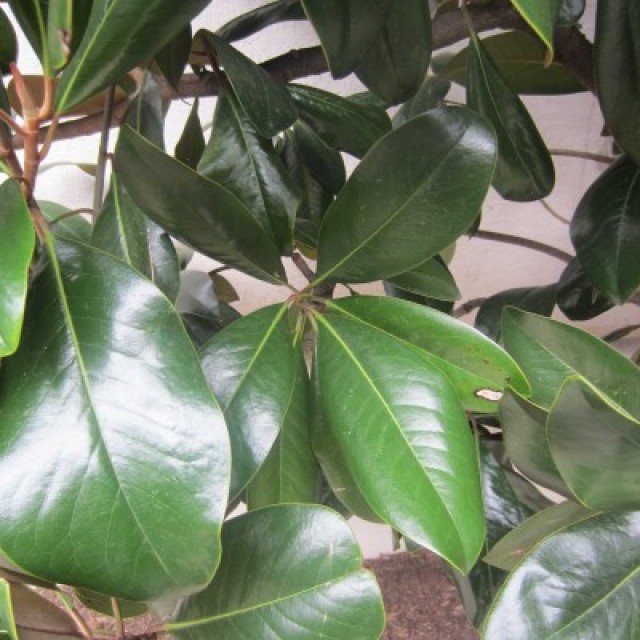COMMON NAME
Southern magnolia
SCIENTIFIC NAME
Magnolia grandiflora
ALSO KNOWN AS
Bull-bay, Evergreen magnolia, Laurier tulipier
Plant family
Magnolia (Magnoliaceae)
Plant group
Broadleaf Evergreens
Southern magnolias are evergreen trees with large, shiny, leathery evergreen leaves and large, fragrant 6-petaled creamy-white flowers that appear on the ends of thick, tough stems all over the tree.
454 reports
199+
OBSERVERS
454+
OBSERVATIONS
Identification hints
Magnolias have distinctive large, shiny evergreen leaves, and large fragrant flowers with many long narrow petals. The leaves often have an orangish-coloration on the underside. Sweetbay magnolia (Magnolia virginiana) also occurs in southern coastal plains but has thinner leaves with whitish undersides.
Did you know?
The Southern magnolia is one of the most beautiful trees and is therefore highly valued as an ornamental. The Choctaw and Kosati tribes used the bark of this tree as a dermatological aid. The Southern magnolia is the state tree of both Louisiana and Mississippi.
DISTRIBUTION IN TH U.S.
Alabama
,
Arkansas
,
Florida
,
Georgia
,
Louisiana
,
Maryland
,
Mississippi
,
North Carolina
,
South Carolina
,
Tennessee
,
Texas
,
Virginia
HABITAT
Southern magnolia can be found throughout the southern coastal plain from the Carolinas to eastern Texas and thrives in wooded dunes, hammocks, river bottoms, ravine slopes, and coastal plains. It is also commonly planted in parks and along streets in areas of mild climate across the country
ATTRIBUTES
Leaves
The leaves are distinctly alternate. Southern magnolias have a dense growth of smooth, leathery evergreen leaves that are 5 to 10 in (12 to 24 cm) long, dark, shiny green on top, and rusty below.
Flowers
Fragrant, creamy-white flowers (which discolor easily if bruised), appear on the ends of thick, tough stems all over the tree. They are cup-shaped, about 8 in across, with 6 thick petals, wider at the tip. The blossoms open at about 9:00 a.m. and close at night for 2 or 3 days; then all the stamens are shed and the flower reopens, turns brown, and disintegrates.Flowering occurs in the spring. The flowers appear throughout the summer and into the fall.
Fruits
Conelike seed pods contain large red seeds. When the pods open, the seeds often fall from place and hang by silky threads.
Bark
The bark is gray, rough, thick, and furrowed in thick plates. The twigs are densely red or white and hairy.
See Menu
- 2021 Chicago Botanic Garden. All Rights Reserved.
-
Creative Commons
BY-NC-SA 4.0 - Terms of Use
- Privacy Policy
- Data Sharing and Citation Policies
- 2021 Chicago Botanic Garden. All Rights Reserved.



